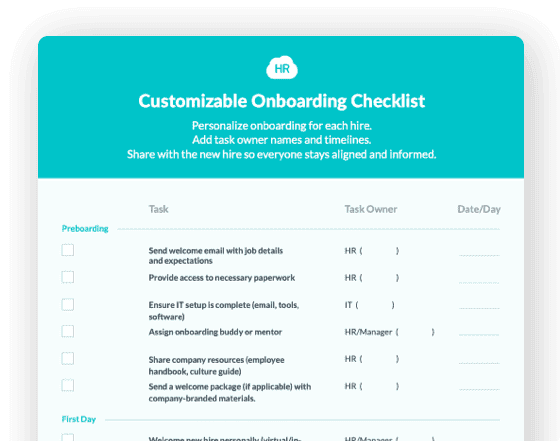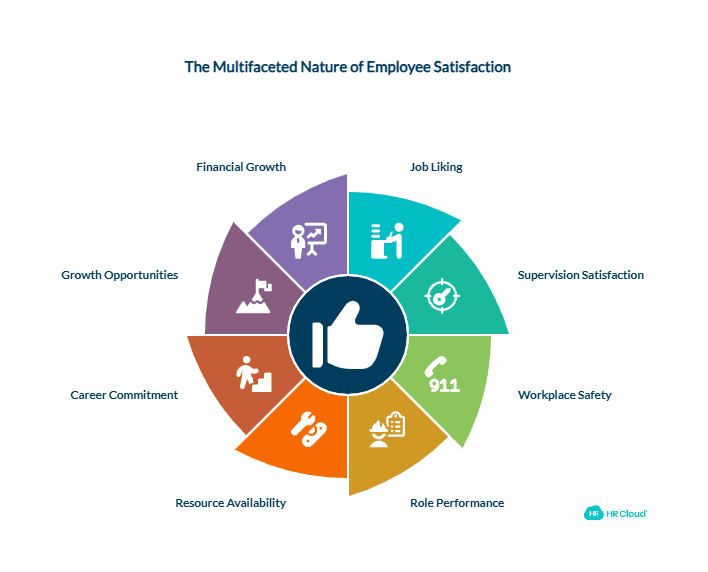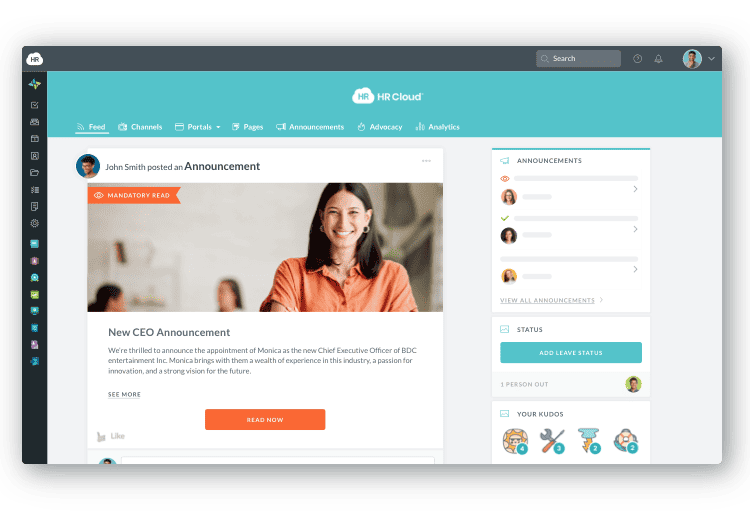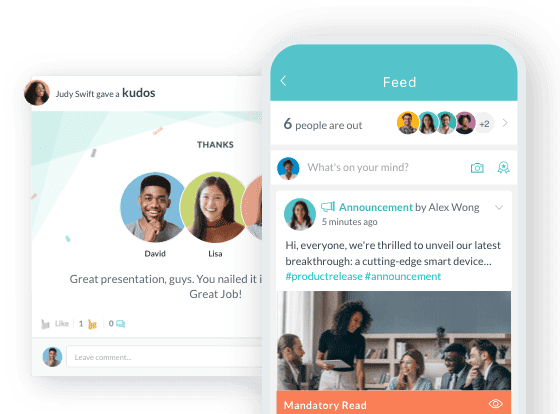

 Cut onboarding time
by 60%—here's the
Ultimate Checklist
that helped do it.
Cut onboarding time
by 60%—here's the
Ultimate Checklist
that helped do it.

Achieving employee satisfaction is crucial for every organization for various reasons. There are six superb ways to enhance job satisfaction within your organization, especially in the context of a remote workforce. In fact, employee satisfaction is beneficial for all businesses—whether it's a small business, new startup, or a multinational corporation with a global workforce.
So how does one go about ensuring employee satisfaction? To do so, we first need to comprehend what this term "employee satisfaction" actually implies, particularly in the age of working remotely.
Defining Employee Satisfaction
In simple terms, employee satisfaction is a yardstick that companies utilize to know whether their staff at all levels are happy doing the job and with workplace conditions, including virtual work environments.
What most human resources managers aren't aware of is that employee satisfaction has more to do with psychology instead of simply providing good pay and excellent working conditions. In fact, employee satisfaction is all about the state of mind of an employee at the workplace—whether physical or virtual—that also extends to their personal lives and work-life balance.
Therefore, it's not easy to measure employee satisfaction levels. There are several factors that go into determining employee satisfaction:
-
Overall liking of the job by an employee.
-
Satisfaction over levels and quality of supervision, including remote leadership.
-
Feeling safe and secure in the workplace or when working remotely.
-
Ability to perform the role well, even when facing remote work challenges.
-
Adequate resources necessary for daily working, including productivity tools.
-
Commitment to making a long career with the employer, contributing to employee retention.
-
Career advancement opportunities and professional development.
-
Prospects for financial growth.
All these factors have a close link with one another and are some of the common factors that HR managers and employers worldwide use to measure employee satisfaction. Engagement survey tools can be particularly helpful in assessing these factors among remote employees.
Here it's also important to remember that an organization's goals should correspond with its desire to achieve employee satisfaction. Focusing merely on employee satisfaction without concern about the organization's goals for growth, expansion, and greater profitability can prove disastrous.
Reasons to Aim for Employee Satisfaction
At the same time, there are very strong reasons why any business serious about staying in business and growing needs to take steps to ensure employee satisfaction.
Rising Cost of Hiring
The cost of hiring an employee ranges between $7,000 and $50,000, depending on the role they'll play. This includes various hiring processes such as advertising online or offline for a vacancy, shortlisting the right candidates, tests, interviews, and training before the new hire fits into the role and starts performing well. These expenses don't calculate the man-hours an organization spends on such processes and training. Nor does it consider the costs of lower productivity of a new hire. This makes it imperative to retain existing employees, especially top talent within the organization, thus reducing turnover.


Lowering Attrition Rates
Employees tend to leave an employer if they're unhappy at a workplace for any reason, leading to reduced employee retention. And this leads to hiring costs, for obvious reasons. However, high employee satisfaction is known to help retain the best talent while developing loyalty to your organization. It's well known that loyal staff exert extra efforts to ensure the organization achieves its goals, including sustainability goals. And in most cases, they'll stand with their employer if the company runs into doldrums for any reason. Loyal employees won't leave an employer merely for a bit higher salary.
Healthy Reputation for Employers
Employee satisfaction directly translates to a healthy reputation for employers. Because this satisfaction reflects on their lifestyles and overall employee wellness. Satisfied employees also spread a good word about the employer through word-of-mouth publicity. This makes it easier for organizations that have a high level of employee satisfaction to attract the best talent and sometimes, wean away people with vital skills from competitors to their own companies. Workplaces with high employee satisfaction rates also find it easier to get fresh recruits quickly whenever they announce a vacancy through job boards, LinkedIn, or their own websites, expanding their talent pool.
These three benefits of achieving employee satisfaction are something that every organization would definitely desire. And there are some simple ways to try and achieve employee satisfaction.
Six Ways to Achieve Employee Satisfaction
In today's dynamic work environment, employee satisfaction is more important than ever. With the growing trend of remote work, organizations must adapt their strategies to meet the changing needs of their workforce. Achieving employee satisfaction is no longer just about offering competitive salaries or benefits; it also involves creating a positive and fulfilling work experience. Here are six effective ways to enhance employee satisfaction in the modern workplace.
1. Work from Home Facilities
Remote work has become the standard for many employees. For organizations that are continuing with or expanding remote work arrangements, it's crucial to make the experience as enjoyable and productive as possible. While working from home offers flexibility, it also presents challenges such as maintaining work-life balance and staying connected with colleagues.
To support employees, organizations should offer flexible schedules where possible, encourage breaks, and provide tools for effective collaboration. Ensuring that employees feel supported in managing their time and well-being while working remotely is key to maintaining job satisfaction.
2. Better Communications at Every Level
Remote working or work from home also necessitates improved communication between employers and employees. Seamless communication through video conferencing and other tools helps employers to clearly outline objectives, leaving no room for ambiguity.
Clear communication combined with effective collaboration among remote teams is essential for employee satisfaction. When employees understand their tasks and responsibilities, it leads to higher productivity and reduces misunderstandings. However, it’s important to ensure that communication doesn’t cross into micromanagement territory. Setting clear objectives and focusing on outcomes rather than monitoring every detail helps maintain a harmonious and efficient remote work environment.
3. Online Training Programs
Training remains one of the most effective ways to ensure employee satisfaction while benefiting the organization as well. With technology constantly evolving, employees must be equipped with the latest skills to keep up with changing demands.
Providing training programs—especially online—ensures that employees remain competitive and capable in their roles. Offering self-paced learning through learning management systems (LMS), along with digital skills training and role-specific development, can enhance job satisfaction. For remote teams, incorporating microlearning and social learning strategies can ensure continuous growth and development..
4. Internal Promotions & Career Growth
Employees seek career advancement and growth opportunities. A clear pathway for internal promotions fosters job satisfaction and reduces turnover. When organizations prioritize internal promotions, they not only reward loyal employees but also encourage healthy competition and growth.
Offering career development programs and providing equal opportunities for advancement ensures that employees feel invested in the organization. Additionally, promoting from within can save costs and time, as the employee is already familiar with the company’s culture and values. This approach fosters loyalty and strengthens the overall work environment, especially in a remote setting.
5. Preventing Overwork
Remote work can sometimes blur the lines between personal and professional life, leading to overwork. Employees may feel pressured to extend their hours because they are working from home, believing that it can be done more flexibly.
Organizations should focus on results rather than hours worked to prevent burnout. Encouraging employees to take breaks, setting clear boundaries between work and personal time, and offering productivity tools can help manage workloads effectively. Maintaining a balanced approach to work ensures employees feel respected and supported in managing their time and well-being.
6. Incentives & Appreciation
Providing timely incentives in the form of cash rewards or pay hikes and instant appreciation of high-performing employees is a time-tested and proven technique to promote employee satisfaction. Though it might sound outdated, this practice is relevant to date and works well for every organization that implements the system.
Lack of appreciation is a reason for high staff turnover. And not incentivizing good performance causes disgruntlement among employees at all levels. Combine the two, and an organization could actually face mass resignations and very high attrition. The best way to stem these undesirable situations is to incentivize good work and appreciate outstanding performance by employees.
Incentives and appreciation always work well to achieve employee satisfaction. It also benefits the employer since all employees exert extra effort to gain appreciation and avail incentives. In a remote work environment, virtual recognition programs and digital rewards can be effective ways to show appreciation and build team cohesion.
In Conclusion
There are also some other known ways to achieve employee satisfaction. However, with the new normal for work, it's best to adapt or utilize the above six ways to suit the specific needs of the organization. After all, employee satisfaction helps businesses grow faster and attract the best talent. Any investments in achieving employee satisfaction are therefore worthwhile.
As organizations continue to navigate the challenges of remote work, focusing on employee satisfaction becomes even more crucial. By implementing effective remote work strategies, providing opportunities for skill advancement, and fostering inclusive collaboration, companies can ensure their workforce remains engaged, productive, and satisfied, even in a virtual work environment.

Keep Reading
How HR Cloud Is Shaping the Future of HR in Senior Care
At the 2025 LeadingAge Annual Meeting in Boston, one conversation is taking centerstage —
Top 10 Best Employee Engagement Software
An employee engagement platform acts as a hub for the daily or other periodic rituals of
How to Improve Employee Engagement in Healthcare: 9 Simple Things to Start Doing Today
Improving employee engagement in healthcare teams directly impacts the level of care
Like What You Hear?
We'd love to chat with you more about how HR Cloud® can support your business's HR needs. Book Your Free Demo

Build a Culture of Recognition. Boost Engagement. Guaranteed.
Workmates empowers employees to stay informed, connected, and appreciated—whether they’re on the front line, in the office, or remote. Recognition drives 12x higher engagement.Trusted by industry leaders in every sector




Cut Onboarding Costs by 60%.
Take the confusion and follow-ups out of onboarding with automated workflows, digital forms, and structured portals—so new hires ramp faster 3X quicker.Trusted by industry leaders in every sector





